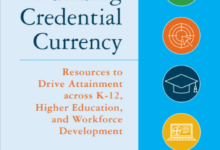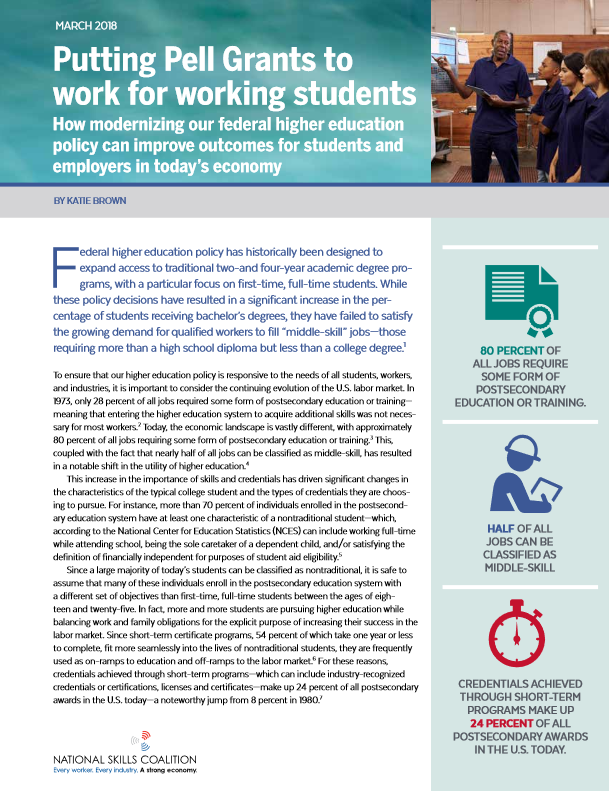Nearly half of jobs can be classified as “middle-skill” jobs, meaning that they require more than a high school diploma but less than a college degree. Many short-term credential programs can help fill this demand for middle-skill jobs. Despite this, students enrolled in short-term programs are typically ineligible for federal financial aid such as Pell grants, simply because their coursework does not meet the length and time requirements dictated by current law.
This report from the National Skills Coalition makes the argument for increasing Pell eligibility for students enrolled in short-term credential programs to address the growing demand for qualified workers to fill “middle skill” jobs. The report outlines policy recommendations and encourages Congress to adopt a community college compact to recognize the important role of community and technical colleges in equipping working students and businesses with the credentials and skills needed in today’s economy. The report also highlights Iowa and Virginia‘s efforts to increase access to short-term programs through the GAP Tuition Assistance Program (GAP) and New Economy Workforce Grant Program, respectively.
This resource can help policymakers and stakeholders understand how increasing Pell eligibility for students enrolled in short-term credential programs could help address the demand for qualified workers to fill “middle-skill” jobs.







